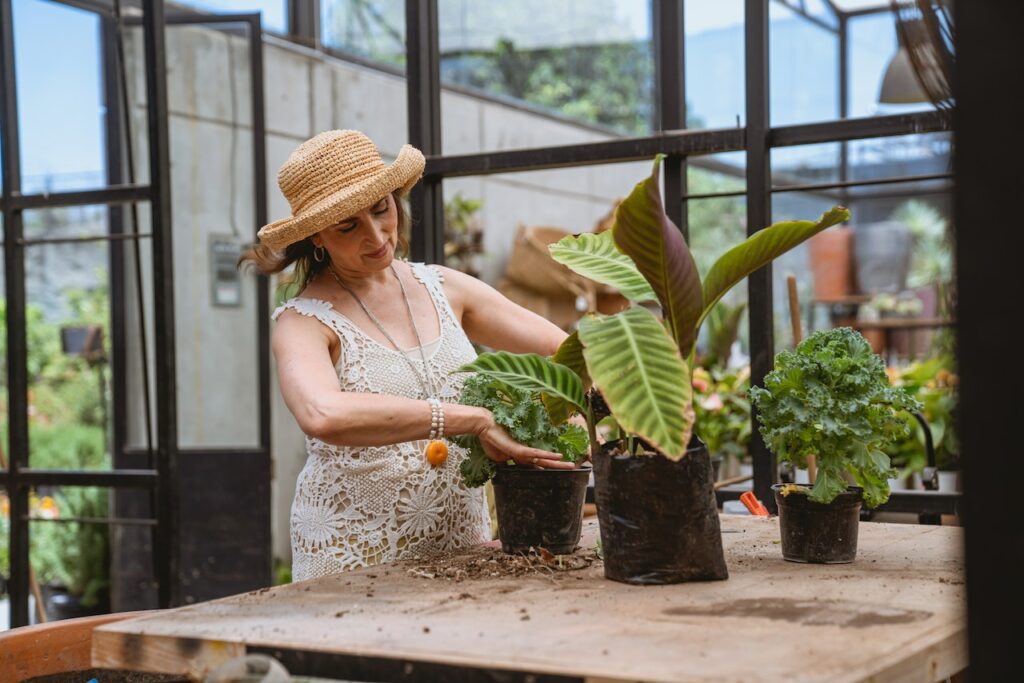Marriage is sometimes described as a voyage, two people navigating calm and turbulent seas together. After 50 years, couples enter the deep seas of mature love and friendship. But like any journey, post-50 marriage has its obstacles and benefits. Relationships change over time, so marriage attachments do too. This growth must be recognized to sparkle the ‘golden years’ of marriage.
A thorough National Center for Family & Marriage Research research reveals some interesting facts. One of its most notable results was couples’ continuous increase in marital happiness after their silver anniversary. This research implies that long-lasting partnerships are rich. They’ve endured many storms, experienced many pleasures, and enjoyed many adventures. The path isn’t without challenges.
An important US statistic highlights the difficulty late-married couples confront. Less than half of spouses commemorate their 35th anniversary, compared to 60% for their 25th. This steep fall in the next decade highlights post-50 relationship difficulties. How can couples guarantee that their years beyond 50 are about reinvigorating and strengthening their bond?
This conversation aims to reveal the keys to prospering in the ‘second act’ of marriage. We share eight essential suggestions from relationship psychology to help individuals over 50 traverse the excellent road of marriage with love, understanding, and pleasure.

Prioritizing Open Communication
Communication is frequently the golden thread that binds people in complex relationships. Open communication becomes essential in marriages, which develop and progress. As couples enter deeper relationship periods, especially beyond 50, clear and honest communication becomes essential for maintaining harmony. The word “open” is crucial because it goes beyond the surface to reveal vulnerability, honesty, and deep understanding.
This communication is built on trust. Like a building with a firm foundation, relationships flourish on trust. This trust is built via open communication. Partners demonstrate their dedication and honesty by sharing their aspirations, anxieties, and ambitions. Transparency eliminates uncertainty and creates a more trustworthy relationship.
Even in the best partnerships, resentments and complaints lurk. If uncontrolled, these unexpressed sentiments may quietly destroy a relationship. Similar to quiet rust that degrades metal. Open conversation brings out unspoken resentments and addresses them quickly. It gives a secure space for partners to express their thoughts without judgment, preventing little annoyances from becoming big confrontations.
Open communication goes beyond resolving hidden concerns to ensure mutual understanding. Our ambitions, objectives, and requirements change as we do. Even after decades together, assuming one knows their mate well is foolish. Open talks keep partners informed of each other’s changing needs and expectations. Understanding the unspoken, reading between the lines, and harmonizing life’s rhythm.
Finally and most importantly, free communication leads to emotional connection. Though physical closeness is lovely, emotional bonding keeps a relationship alive. Partner expressing aspirations, worries, achievements, and disappointments deepens emotional connection. This inner refuge, filled with respect and compassion, nurtures love.
The Value of Marriage-Shared Activities
The desire to spend time together is sometimes ignored in the thick of life’s many duties and routines. As couples age significantly beyond 50, joint activities become increasingly important. It’s about ‘living moments’ together, immersing oneself in shared experiences, not just spending time’. Sharing time weaves marriage life’s personal, emotional, and relational strands.
These linked hobbies revolve around the gift of memory. Memories are the heart’s eternal treasures. An evening of dancing, a hike, or lunch together creates new memories. Each memory, humor, and hardship becomes a treasured page in marriage’s unfolding tale. Looking back, these moments rekindle the love and warmth of shared experiences.
Participating in common activities strengthens friendships. Relationships, particularly marriages, are about deep connection, not simply passionate love. Activities together gently remind us of this friendship. They emphasize that marriage is a relationship where both parties support and celebrate one another. It’s about rekindling the friendship that typically underpins marriage.
Playfulness is another benefit of shared activity. Couples frequently forget the lighthearted spark that drew them together amid obligations, life’s problems, and routine. Playing a board game or skydiving together might restore this fun. It reminds us that love can be joyful and bubbly.
Last but not least, shared activities foster strong connections. These are experiences—moments when couples connect, comprehend, and develop. They allow couples to understand more about each other, discover new sides, and build their invisible but impenetrable relationship.
The Core of Marriage Emotional Intimacy
Emotional intimacy illuminates depth and connection in relationships, where love takes many forms. It goes beyond the body and into the heart and soul of love. This emotional intimacy becomes the heartbeat of a marriage beyond 50, guaranteeing longevity and a richer togetherness.
Emotional closeness is the foundation of couple bonding. Physical desire may have started the relationship, but emotional entwining has sustained it for decades. This connection is about knowing one’s partner’s hopes, anxieties, pleasures, and sufferings. Looking beyond the apparent and finding the soul underneath creates an unshakable and meaningful friendship.
A deeper connection fosters mutual regard. By nature, emotional closeness requires deep knowledge and acceptance of each other’s emotions. When couples listen and appreciate one other’s feelings, they create mutual respect. Respect is a quiet pledge that says, “Your feelings matter to me.” Trust and understanding are the foundation of sustainable partnerships.
At its foundation, emotional connection invites vulnerability. To be emotionally connected to someone, one must reveal their real self, flaws, and all. This vulnerability, however scary, may bring lovers closer. Authenticity comes from being oneself and being honest about feelings. It’s a powerful reminder that love is about sharing defects, not perfection.
Managing Physical Changes in Late Marriage
Transitions and evolutions highlight life’s broad and complicated path, each phase bringing its modifications. As couples reach 50, one of the biggest physical changes they experience is aging. Age’s unrelenting march causes bodily changes that might be difficult in marriage. With the correct perspective and attitude, these shifts may become bridges of greater connection and understanding.
The force of acceptance drives this metamorphosis. Wrinkles on one’s face, silver strands in the black, or low energy levels are all signs of a full life. Celebrating the journey, memories, and shared experiences these markings symbolize is embracing these changes, not resignation. Couples develop a great appreciation for one another and their journey through encouraging acceptance.
Acceptance and admiration are crucial to romance. Romance is often confused with youth. True romance is in the heart, how lovers perceive, comprehend, and cherish one other. Couples may rekindle love and romance by accepting physical changes and acknowledging their beauty. Love persists, even when gestures change from thrilling adventures to calm nighttime walks.
Encouragement of attachment stands out among these changes. In its many manifestations, physical contact has always carried love and connection. This connection may change with age, but its value persists. Handholding, soft caressing, or a loving stare may express feelings that words cannot. The comfort, warmth, and connection these tiny actions bring are deep.
Couples unintentionally acquire confidence by adapting to bodily changes. When couples applaud one other’s growth, self-esteem and confidence soar. Mutual appreciation builds self-confidence and respect when each partner feels appreciated and treasured despite age-related changes.
Last Chapters of Marriage: Mutual Goals’ Power
Every stage and period of life contains ambitions and desires. Even when couples celebrate 50 years together, looking forward and planning for the future is crucial. Setting objectives together in your senior years is more than just planning—it’s a reaffirmation of your commitment, love, and relationship. It illuminates and directs their mutual journey.
Clarity and direction are crucial to joint objectives. Retirement, family changes, and health issues may make life beyond 50 unfamiliar. Mutual aims guide us. These shared goals—traveling to a dream place, starting a hobby, or setting new daily routines—keep both partners on track and going together.
Setting and achieving these objectives emphasizes collaboration. Marriage is a collaboration between two people who construct a story. Shared aims strengthen this collaboration. Every debate, decision, and compromise made to achieve these objectives shows how much the couple has grown as a team. It’s a lovely reminder that they confront problems and opportunities together.
Growth also comes from shared aspirations. Individual and societal growth is ongoing. Couples push themselves to learn, adapt, and grow by creating mutual goals. Each objective attained or the route to it is a chapter of development, sharpened talents, widened views, and strengthened bonds. The dynamic process brings depth, insight, and maturity to the relationship.
External Support’s Value in Marriage’s Evolution
Marriage is a complicated ballet of emotions, aspirations, and problems. Therefore, there may be hesitations or falters. These normal moments might lead to longer periods of disconnection or misunderstanding. In the post-50 relationship period, couples must realize that getting help from therapists, counselors, or trustworthy friends is not an admission of failure. Instead, it shows the desire to deepen and reinvigorate the relationship.
A new viewpoint from outsider involvement is a major benefit. Couples may fail to perceive the big picture due to their relationship’s complexity. With their objective perspective and specific expertise, professionals may reveal patterns, habits, and underlying concerns that others may not see. They give knowledge and expertise-based insights, recommendations, and solutions, clearing the path for managing problems.
External help also boosts problem-solving. Relationships naturally provide obstacles, large and small. Resolving these issues is crucial to the bond’s health and sustainability. Therapists and counselors may help couples resolve issues using their skills and methods. They help couples to become stronger problem solvers and confidently confront future obstacles.
Accountability is another benefit of getting outside help. In the sensitive dynamics of marital arguments or misunderstandings, couples might get entrenched in their positions and ignore their contributions. An external mediator or therapist helps both spouses understand and accept their responsibilities in the relationship. Without blame or finger-pointing, this positive responsibility encourages partners to collaborate on solutions.

Meaning of Milestones and Traditions in Marital Odyssey
The joys, hardships, achievements, and lessons of marriage are like a tapestry. Each knot reflects the shared memories and events that built the connection. As couples develop, celebrating anniversaries and fostering traditions become more important. Honoring, cherishing, and strengthening the link for the future is more than rehashing the past.
Honoring the common past is key to commemorating milestones. The day they met, their wedding anniversary, or a major challenge they overcame together are milestones in their relationship. Couples honor their past and the love, patience, and perseverance that have built their relationship by celebrating them. It acknowledges their love and life stories from the past.
Adding pleasure via customs is fantastic. Traditions, whether vast or little, provide satisfaction. These traditions bring constant connection, pleasure, and togetherness, whether it’s an annual vacation, family reunion, or nighttime habit. They provide regularity and comfort, strengthening the partnership.
Recognizing accomplishments, milestones, and even tiny joys strengthens commitment. Stopping, acknowledging, and celebrating reminds us of our eternal love in a changing world. It affirms that love, honor, and cherish remain constant despite life’s chaos.
The Transformational Power of Gratitude in Golden Marriage
Gratitude is one of the most powerful and transformational factors in human emotions and experiences. Its power to change attitudes, build relationships, and improve everyday life goes beyond noticing the positive. As couples cross deep seas of marriage, particularly beyond 50, everyday appreciation becomes more than a pleasant habit. Warmth, optimism, and depth illuminate the connection like a light.
The habit of appreciation fosters optimism. Despite their complexity, relationships are affected by emotions, events, and experiences. However, appreciation provides a distinct perspective. Couples concentrate on the good by being grateful for shared pleasure, generosity, and dedication. This positive-centric approach promotes love, respect, and appreciation.
Gratitude’s effect in reducing negativity is equally important. Life presents hardships, misunderstandings, and skepticism, even in a loving relationship. However, consistently remembering one’s blessings and focusing on the many reasons to be grateful buffers. It softens bad events, emotions, and experiences with compassion, understanding, and optimism.
Additionally, every day Thanksgiving enhances appreciation. In the bustle and regularity, taking the relationship or partner for granted is tempting. Gratitude gently reminds me. Couples develop a deep regard for one another by acknowledging their tiny actions, shared aspirations, and mutual support. Value and recognition enhance the link, making it more robust and valued.
Conclusion
Marriage is a journey full of shared ambitions, struggles, and accomplishments. As couples enter the post-50 phase of this magnificent adventure, the scenery may change, but love, commitment, and mutual development remain. The “8 Tips for a Happy Marriage After 50” guide couples through this stage with grace, understanding, and a strong commitment.
These rules take us from the significance of open conversation, which builds trust and understanding, to the delight of shared activities that create lasting memories, from emotional closeness to physical transformation. They emphasize creating shared objectives, asking for help when required, celebrating successes, and the transforming power of everyday thankfulness.
The Pew Research Center found that older Americans, especially those who marry after 50, are happier and more compatible in their relationships. This shows the strength and depth of later-life friendships. The eight suggestions help mutually growing and understanding relationships thrive, making the golden years of marriage as bright as the ones before them.














